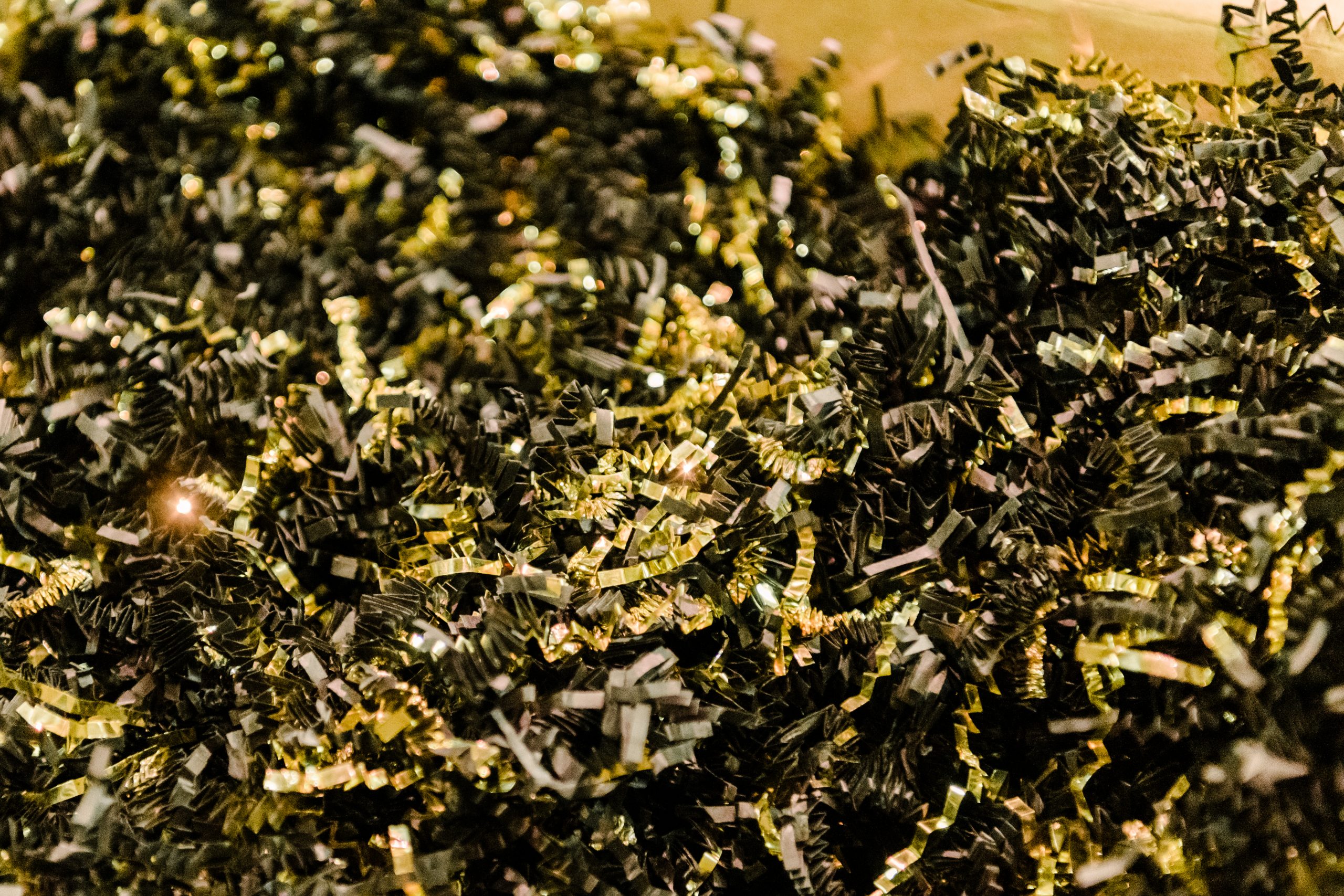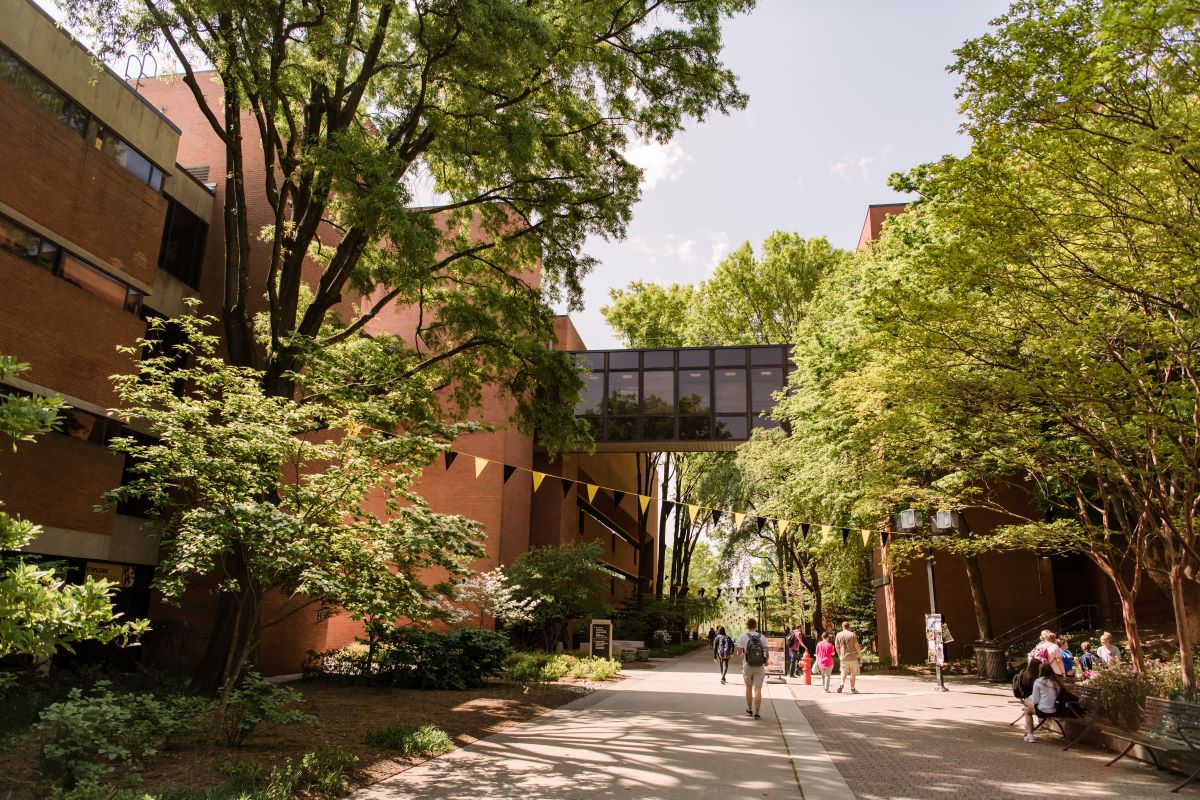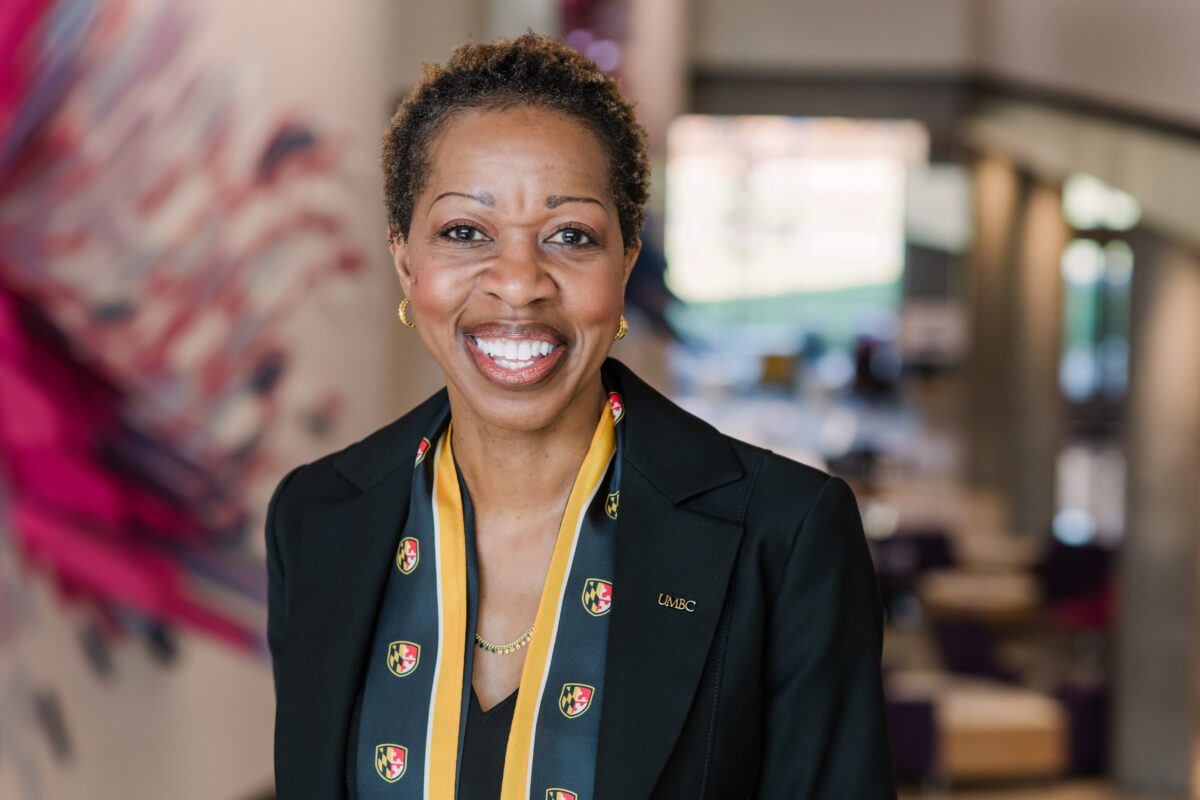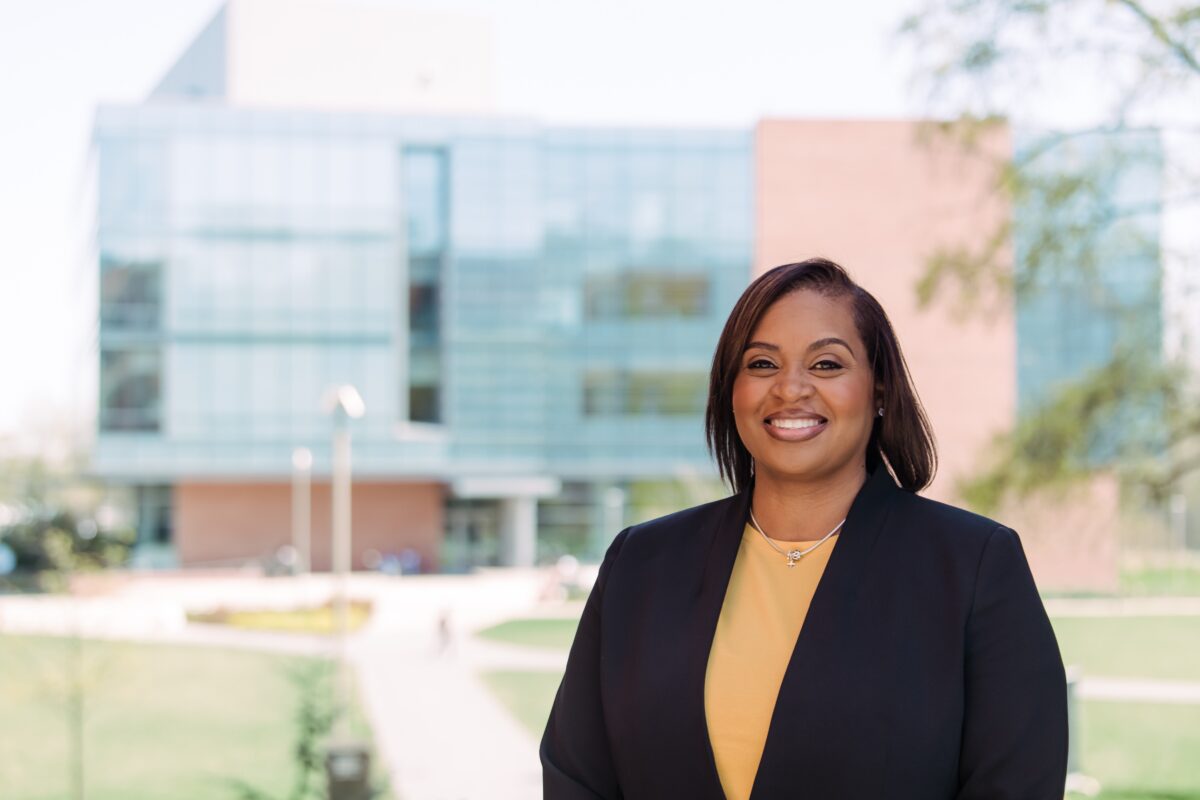Five months after moving classes online due to the COVID-19 pandemic, the UMBC community is preparing for a fall semester unlike any before. UMBC has been gradually transitioning to limited on-campus research and creative activity since June. When the fall semester starts on August 27, a small proportion of Retrievers will live, study, and work on campus, after completing detailed health and safety requirements. Most classes and work continue to progress remotely, using tools and approaches enhanced throughout the summer months.
To create a roadmap for the fall, UMBC has relied on a strong tradition of community collaboration, bringing together committees of faculty, staff, and students to address every aspect of campus activity. In this way, UMBC can continue to live out its strong commitment to inclusive excellence and provide a distinctive academic and social experience during this unprecedented time. UMBC leaders are also in regular communication with the University System of Maryland (USM), and local and state leaders, about new policies guiding campus health and safety efforts.
For Joshua Gray ’22, dance, who will be living on campus during the fall semester, knowing that so many people have been involved in discussions about community health and safety, as well as supporting student success, is reassuring. “I could tell that no decision was made without many people in the room,” Gray says.
COVID-19 testing and symptom tracking
All students, faculty, and staff who are approved to return to campus for the fall semester are required to take a COVID-19 test and submit their results prior to the start of the semester. They are also required to complete daily online symptom tracking beginning 14 days before arriving on campus. Symptom tracking will continue throughout the semester.

In addition to these University System of Maryland requirements, UMBC is also requiring all returning Retrievers to complete an online health and safety training. Students will also be required to read and sign a new community agreement focused on actions to decrease the risk of COVID-19 transmission on campus.
Health and safety protocols
At a virtual town hall for UMBC staff held on July 1, Lenn Caron, assistant vice president for Facilities Management, described several measures UMBC is taking to minimize the spread of COVID-19.
UMBC’s Facilities Management office has been working closely with campus leadership and ABM, the custodial company contracted by UMBC, to ensure that spaces and buildings are continually sanitized. This includes cleaning all high-touch surfaces multiple times per day, such as restrooms, elevators and elevator buttons, handrails, and doorknobs.
ABM staff have received specialized training on how to safely and effectively sanitize and disinfect spaces on campus. They also are supplied with masks, gloves, and other protective gear in order to protect themselves from possible contact with COVID-19.

In preparation for additional Retrievers to be on campus this fall, Facilities Management has also installed dozens of hand sanitizing and cleaning stations. New signage will remind those on campus to wear a mask and to physically distance.
In addition to the total number of people on campus being limited, UMBC is limiting the number of people allowed in specific lab, office, and classroom spaces, and modifying spaces as needed to support physical distancing. UMBC is also providing masks to all staff who are required to be on campus to complete their jobs.
Preparing to learn online
This fall, 89 percent of courses will be held fully online, 9 percent will be hybrids (including one or more in-person class sessions) and 2 percent will be in-person. No classes will be held on-campus after Thanksgiving break. Previously on-campus courses will resume virtually after that time. Residence halls will also not reopen after Thanksgiving break, as a safety precaution.
Tirzah Khan ’20, information systems, is looking forward to the fall semester, but also knows she will have to implement a new routine and boundaries so she can minimize interruptions and distractions while studying at home. Khan typically commutes to campus, but this semester will be taking classes online. She says that she is used to living with her parents and brother, but she misses her commute. Before the pandemic, that travel time helped her set mental boundaries between school and home.
Khan explains that she’s approaching the fall semester with the mindset that she can’t fully prepare herself for the semester. Because there is so much unknown about how COVID-19 will unfold in the coming months, she is focusing on being adaptable.

As an information systems major, Khan explains that many of her classes had online components even when classes were in person. However, the second half of the spring 2020 semester, when classes moved online abruptly in response to the pandemic, posed challenges. Khan says it took thought and creativity to find new ways to stay in touch with friends and classmates and to connect with faculty.
The importance of building connections has shaped UMBC’s in-person, hybrid, and online course offerings for the fall, as well as strategies to support students.
Preparing to teach online
Several criteria helped campus leaders determine which courses would be held in-person, online, or as a hybrid this fall. These factors included whether courses required special spaces, equipment, or material that could not be reproduced in an online environment. Other considerations included whether courses involved research projects or creative activities that would require in-person work. Some community-building classes, like First-Year Seminars, will also be held fully or partially in-person.
All instructors teaching in-person or hybrid courses will have plans in place to accommodate students who are unable to come to campus, or do not feel comfortable doing so.
Last spring, UMBC faculty had to rapidly shift courses that were originally designed for face-to-face instruction to a remote format in a matter of days. In contrast, fall online classes have been intentionally designed for online instruction, and faculty have been building their online teaching skills throughout the summer.
Hundreds of faculty across all departments have participated in UMBC’s Planning Instructional Variety for Online Teaching (PIVOT) training this summer. PIVOT training helps instructors take a deliberate approach to preparing effective and engaging online courses and creating collaborative classroom experiences.
“Since May, we have engaged well over 300 faculty who took the PIVOT training program, which is based on nationally recognized Quality Matters Standards for effective online course design,” says Sarah Shin, associate provost for academic affairs. “About 450 instructors are participating in more intensive, and discipline-based PIVOT+ learning communities that are facilitated by expert faculty.”
In addition, Shin notes, “our faculty are supported by our Faculty Development Center and Division of Information Technology with expertise in online and hybrid instructional technology, course design, and assessment.”
Building community
UMBC’s residence halls will be at less than 50 percent capacity during the fall semester and on-campus events will be designed with strict safety measures in mind. Still, UMBC is focused on providing a robust student experience beyond the classroom, and community-building is key.
“At each point in planning for the fall, we’ve been very thoughtful about the decisions we’re making and how they impact the community,” says Nancy Young, vice president for student affairs. “Our ability to work across offices, and look at our students’ mental, physical, emotional, and spiritual health as a whole, has been crucial.”
Continuing to build community among students is important to Khan, Gray, and Tess McRae ’21, individualized studies, who are each involved in groups on campus that facilitate connections.
McRae is an intern in UMBC’s Center for Democracy and Civic Life, and has been thinking about what the Center’s community-focused events might look like this coming semester. Staff and students in the Center for Democracy and Civic Life (CDCL) have met regularly throughout the summer to plan meaningful events that will be held online during the fall. These include events related to the 2020 election and online Change Makers Dinners that will create space for community conversations among students and local leaders.
Gray, who is also involved in the CDCL, agrees that creating opportunities for students, faculty, and staff to connect with each other is an important element of the UMBC experience. Khan is involved in CDCL and is also the vice president for design for UMBC’s Student Events Board (seb). She shares that (seb) is actively discussing how to engage both students who are living on campus and students who are completing their courses virtually, through positive community experiences.
Collaboration and innovation
Staff in UMBC Campus Life, CDCL, Off-Campus Student Services, Residential Life, and Identity, Inclusion & Belonging areas have similarly been working to develop events and activities that will engage all students, in person and online. To support virtual events throughout the semester, UMBC’s Division of Information Technology has integrated WebEx teams into the myUMBC platform. This will allow student organizations, as well as offices across UMBC, to engage with community members and stay connected throughout the semester.
Behind the scenes of the student experience, faculty and staff have been working throughout the summer to support all aspects of the UMBC community while navigating pandemic-related challenges. Most faculty and staff members will continue to work remotely during the fall semester, with many juggling care for children and other family members. Human Resources has responded with information and resources to support flexibility for faculty and staff balancing these commitments, including the Families First Coronavirus Response Act (FFCRA).
Through collaboration and innovation, the UMBC community is prepared for a semester that will focus on supporting and celebrating all community members. Relationships are more important than ever, emphasized President Freeman Hrabowski at the latest faculty and staff town hall event, held on August 19. “I want to thank all of you for all that you’re doing,” he said. “Being part of a community means that you’re connected to everyone else.”
Banner image: Black and gold confetti. Photo by Marlayna Demond ’11 for UMBC.
Tags: campus, Resilience




